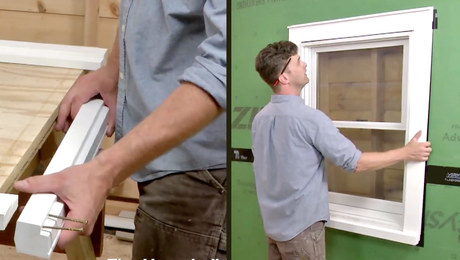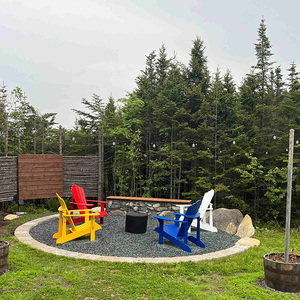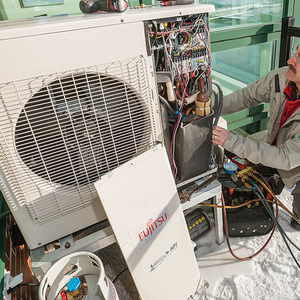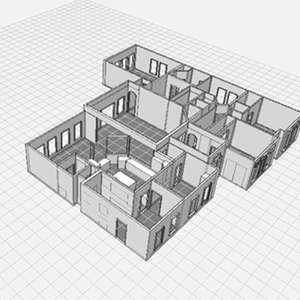I’m preparing to pour a finish concrete foor, slab on grade. The structural plans call for 4″ compacted gravel base, insul-tarp vapor barrier, 2″ of sand and 4″ of concrete. What purpose other than a base for the concrete does the sand serve? Why use it when yopu have thick insul-tarp?
Discussion Forum
Discussion Forum
Up Next
Video Shorts
Featured Story

Join some of the most experienced and recognized building professionals for two days of presentations, panel discussions, networking, and more.
Featured Video
How to Install Exterior Window TrimHighlights
"I have learned so much thanks to the searchable articles on the FHB website. I can confidently say that I expect to be a life-long subscriber." - M.K.
Fine Homebuilding Magazine
- Home Group
- Antique Trader
- Arts & Crafts Homes
- Bank Note Reporter
- Cabin Life
- Cuisine at Home
- Fine Gardening
- Fine Woodworking
- Green Building Advisor
- Garden Gate
- Horticulture
- Keep Craft Alive
- Log Home Living
- Military Trader/Vehicles
- Numismatic News
- Numismaster
- Old Cars Weekly
- Old House Journal
- Period Homes
- Popular Woodworking
- Script
- ShopNotes
- Sports Collectors Digest
- Threads
- Timber Home Living
- Traditional Building
- Woodsmith
- World Coin News
- Writer's Digest


















Replies
its a local decision, some people use the sand so water will migrate under the concrete, some for freeze protection, here we do not use sand. Nothing wrong with it, just not needed here.
What purpose other than a base for the concrete does the sand serve?
In the dark ages (before the internet, CDs & the like), I was taught that you used sand because is has a fine grain which meant it could be shaped precisely. This better let a person control things like concrete thickness, which controls volume, etc. Also, sand has "engineering" qualities like known compression, etc. which vary less between jobs.
Or, in the field: "Ya kin pour over dirt, but dirt ain't even; an' dirt ain't the same everys place." <g>
Here in Southern Calif. where there is hard clay dirt, sand will give tree roots a easy time, so it can pop up the patio or sidewalk.
Sand on top of visqueen help remove the water in concrete so it sets faster.
Sand does provide a homogeneous surface so the concrete will cure evenly (not crack).
http://www.buildingscience.com/resources/foundations/sand_layer_under_slab.htm
I'm glad you posted that link--I don't believe I've ever seen anyone visqueen under the sand base before. Now, I've got printed reasons to "not to."Occupational hazard of my occupation not being around (sorry Bubba)
We commonly use pea fill here, sand is rare for concrete work. Primarily because pea-fill is self compacting and sand has to be jetted or it will settle unevely. Run a hammer across concrete poured on sand after a year and you'll hear the hollows.
reodeler
My understand and the big reason for the sand between the plastic and concrete is so concrete company can get by with a 5 or 6 inch slump instead of 3 inch slump. That is so they don’t need to hire 2 or 3 or 5 extra people to move the concrete when it just sits in one spot after it is placed and won’t self level.
And Why is that a problem? As I am told with the plastic directly under ninth the concrete all the water in a 5 inch slump has to go up and as it moves up and sits on top of the concrete to evaporate you get separation in the concrete because the water sits on top of it to long. The concrete will not get to be the strongest it could be.
it will also make the slab crack
Just out of curiosity, what location is the slab to be in... Garage? basement? driveway? comercial building? etc?
We're talking about1500 sq.ft. of ground level residental with radiant heating, two story victorian near San Francisco.
By the way, Insul-tarp specifies "optional" granular fill on the insul-tarp, which is on 6" - 8" open drain rock. I plan to mechanically compact the rock base.